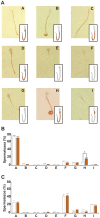Molecular mechanism for human sperm chemotaxis mediated by progesterone
- PMID: 19997608
- PMCID: PMC2782141
- DOI: 10.1371/journal.pone.0008211
Molecular mechanism for human sperm chemotaxis mediated by progesterone
Abstract
Sperm chemotaxis is a chemical guiding mechanism that may orient spermatozoa to the egg surface. A picomolar concentration gradient of Progesterone (P), the main steroidal component secreted by the cumulus cells that surround the egg, attracts human spermatozoa. In order to elucidate the molecular mechanism of sperm chemotaxis mediated by P, we combine the application of different strategies: pharmacological inhibition of signaling molecules, measurements of the concentrations of second messengers and activation of the chemotactic signaling. Our data implicate a number of classic signal transduction pathways in the response and provide a model for the sequence of events, where the tmAC-cAMP-PKA pathway is activated first, followed by protein tyrosine phosphorylation (equatorial band and flagellum) and calcium mobilization (through IP(3)R and SOC channels), whereas the sGC-cGMP-PKG cascade, is activated later. These events lead to sperm orientation towards the source of the chemoattractant. The finding proposes a molecular mechanism which contributes to the understanding of the signal transduction pathway that takes place in a physiological process as chemotaxis.
Conflict of interest statement
Figures






References
-
- Eisenbach M, Giojalas LC. Sperm guidance in mammals - an unpaved road to the egg. Nat Rev Mol Cell Biol. 2006;7:276–285. - PubMed
-
- Teves ME, Barbano F, Guidobaldi HA, Sanchez R, Miska W, et al. Progesterone at the picomolar range is a chemoattractant for mammalian spermatozoa. Fertil Steril. 2006;86:745–749. - PubMed
-
- Austin CR. The “capacitation” of the mammalian sperm. Nature. 1952;170:360. - PubMed
-
- Chang MC. Fertilizing capacity of spermatoza deposited in the fallopian tubes. Nature. 1951;168:997–998. - PubMed
Publication types
MeSH terms
Substances
LinkOut - more resources
Full Text Sources

